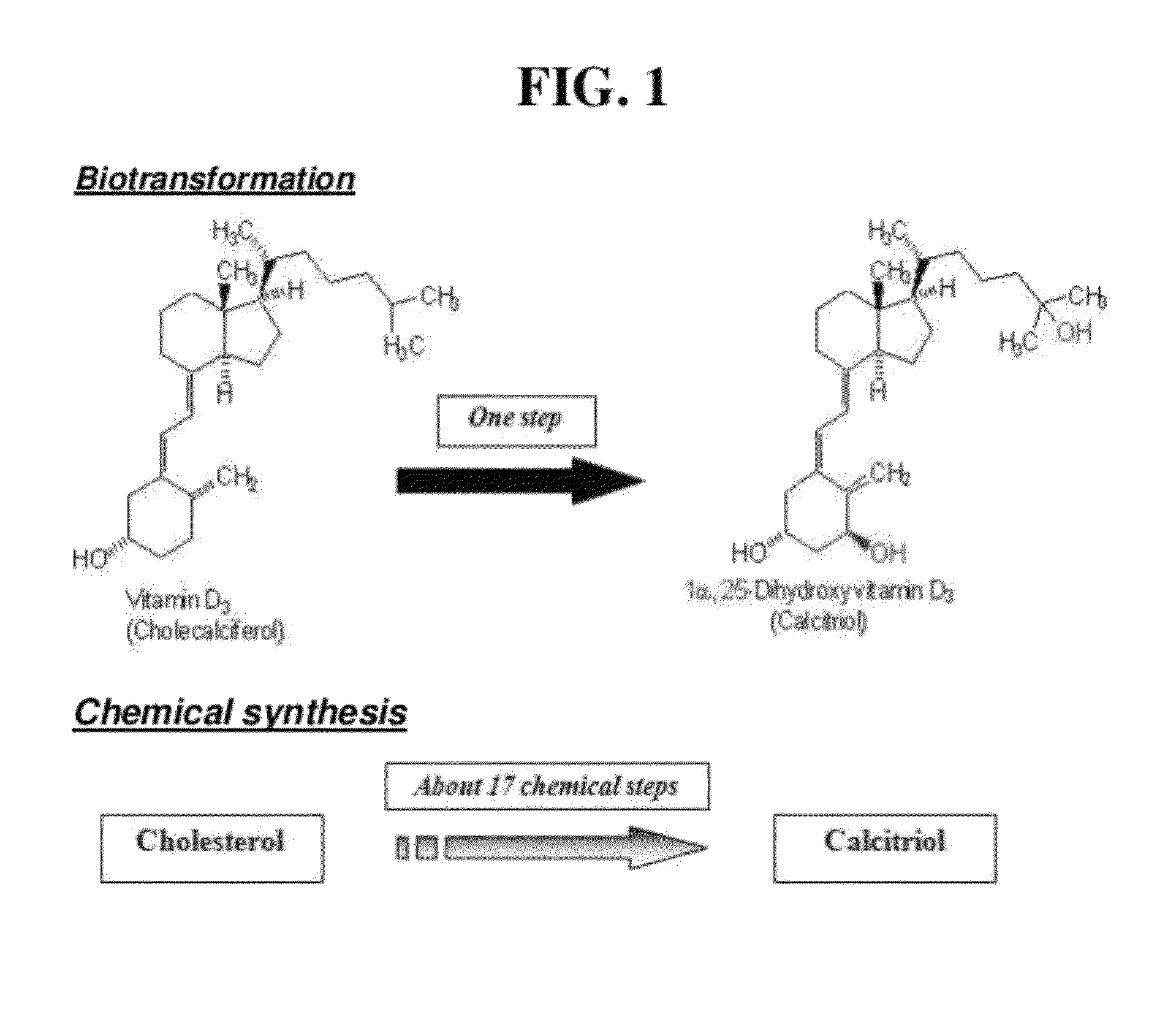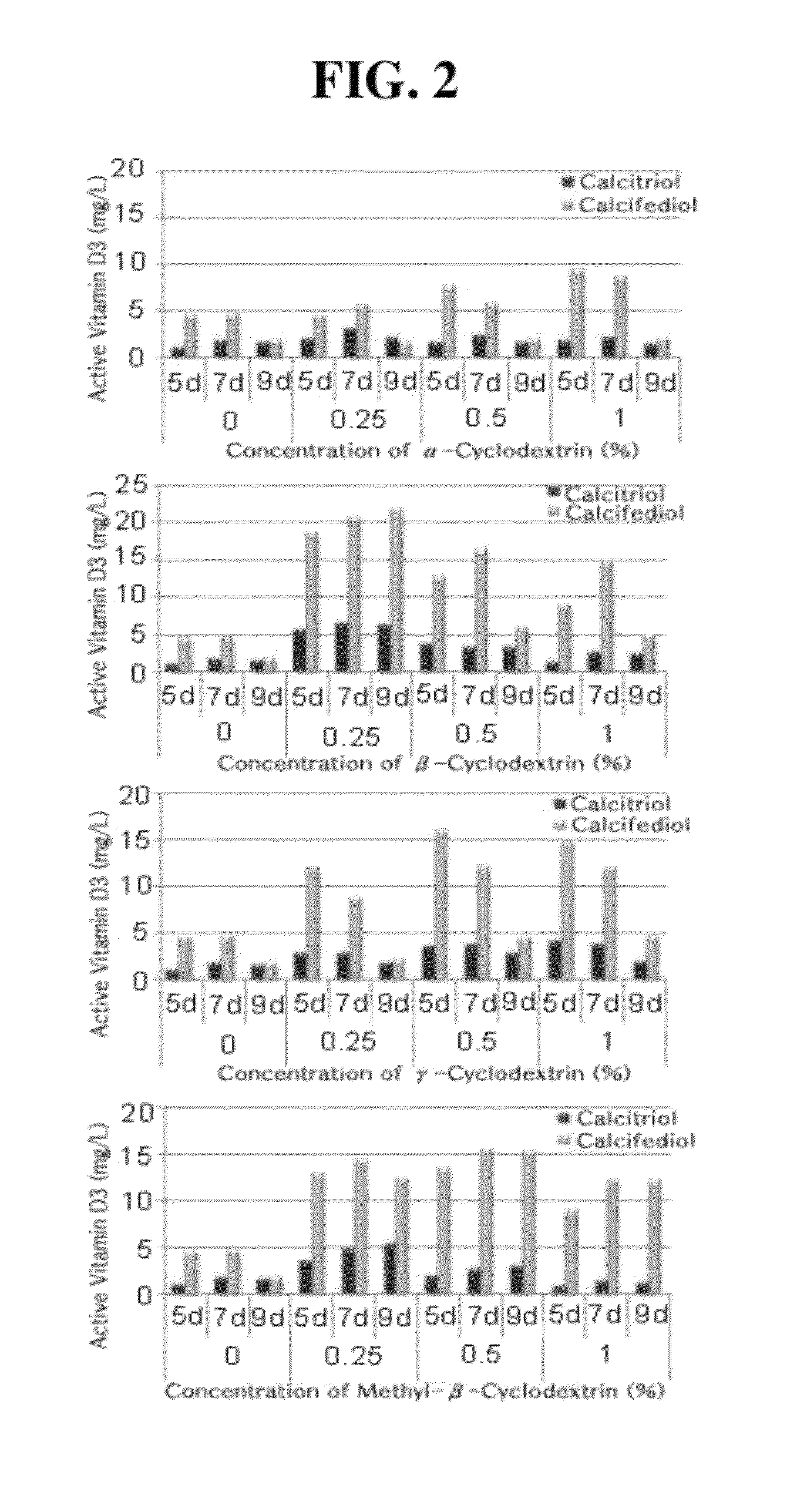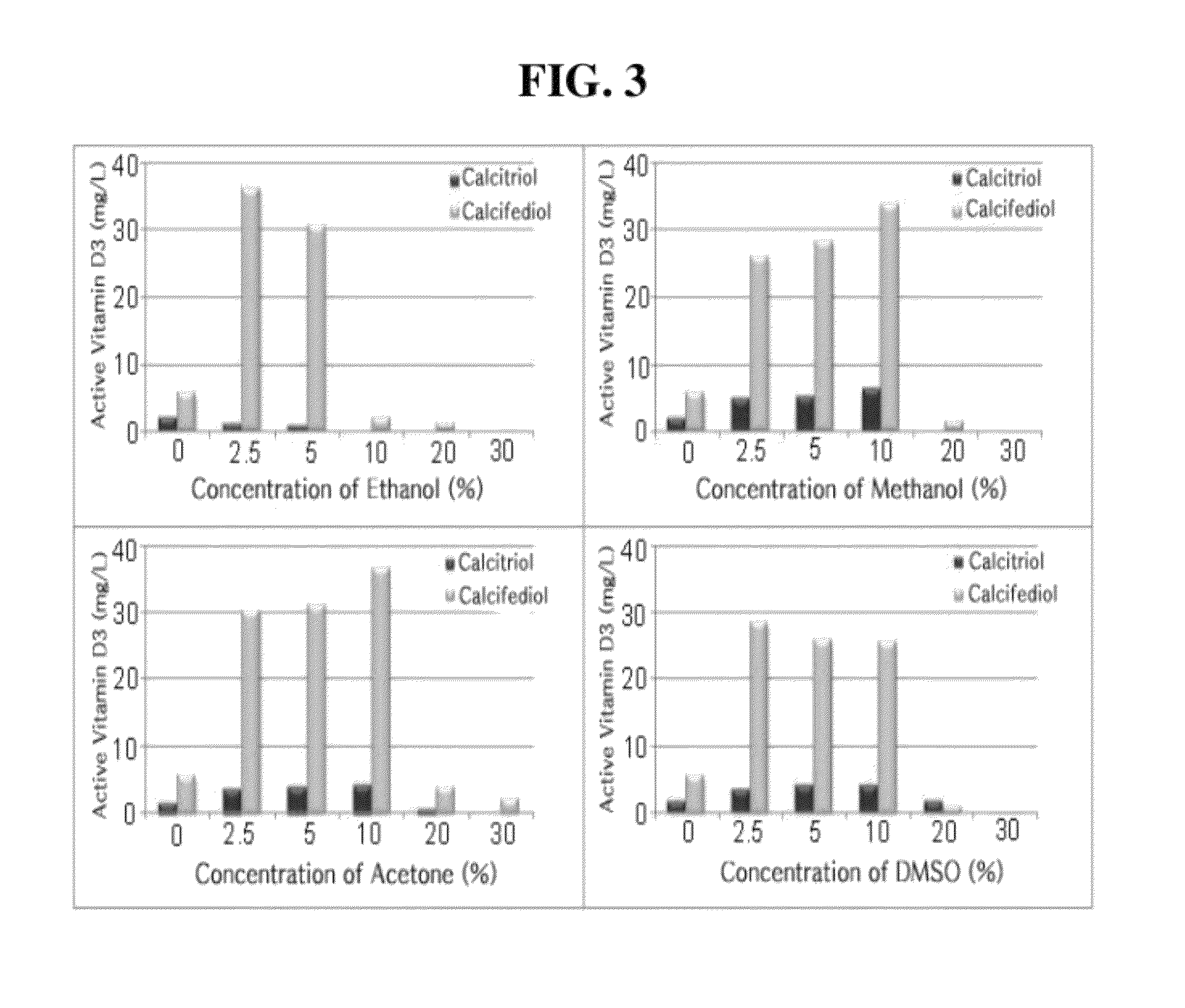Buffer composition for catalyzing the preparation of calcitriol or calcifediol and method for preparing calcitriol or calcifediol using same
a buffer composition and catalyst technology, applied in the direction of organic compound/hydride/coordination complex catalyst, physical/chemical process catalyst, enzymology, etc., can solve the problems of high cost, high technology, and possibility of contamination, and achieve the effect of reducing the risk of contamination, facilitating the formation of organic compounds, and facilitating the formation of catalysts
- Summary
- Abstract
- Description
- Claims
- Application Information
AI Technical Summary
Benefits of technology
Problems solved by technology
Method used
Image
Examples
example 1
Determination of a Biocatalytic Reaction Buffer for Producing Calcitriol
[0063]The productivity of calcitriol was tested in various kinds of buffers so that GAC (growth-arrested cells) as a biocatalyst can introduce a hydroxylic group to vitamin D3 through a biocatalytic reaction.
[0064] Preparation of Pseudonocardia autotrophica ID9302 as GAC
[0065]For the use as a biocatalyst for producing calcifediol and calcitriol of the present invention, Pseudonocardia autotrophica ID9302 (hereinafter, referred to as ID9302) strain was cultured in a medium under a proper condition (dried yeast 0.4%, glucose 1%, starch 1%, fish meal 1%, sodium chloride 0.2%, potassium dihydrogen phosphate 0.01%, beef extract 0.1%, sodium fluoride 0.01%, and calcium carbonate 0.2%, a sterilized liquid medium with pH 7.0), and then microbial cells were collected through centrifugation. The collected microbial cells were washed with a biocatalytic reaction buffer (see Table 1) to be used for the following experiment,...
example 2
Effect on a Biocatalytic Reaction by Cyclodextrin
[0073]Under the same biocatalytic reaction condition as that determined by Example 1, a bioconversion test was carried out. To 50 ml of TSSM buffer, ID9302 GAC as a biocatalyst was added, and various cyclodextrins were introduced thereto with concentrations of 0.25%, 0.5%, and 1%. Also, 300 μl of 5% vitamin D3 ethanol solution was placed in a erlenmeyer flask. Then, a bioconversion test was carried out in such a manner that the mixture was subjected to a shake-reaction for 9 days. On the 5th day, the 7th day, and the 9th day, 3 ml of the reaction test sample was collected, and was subjected to extraction, concentration, and HPLC analysis in the same manner as that described in Example 1-2.
[0074]Through the final HPLC analysis, it was found that cyclodextrin changed conditions of TSSM buffer, and thus increased ID9302 GAC (as a biocatalyst)'s yield for introducing a hydroxylic group to vitamin D3 (see FIG. 2). The productivity of calci...
example 3
Effect on a Biocatalytic Reaction by a Specific Organic Solvent
[0081]Based on the biocatalytic reaction conditions determined from Example 1, an effect on a biocatalytic reaction by an organic solvent, and production effects of calcitriol and calcifediol were tested. Under the biocatalytic reaction conditions of Example 1, 4 kinds of organic solvents noted in Table 3 were administered in such a manner that final concentrations can reach 2.5%, 5%, 10%, 20%, and 30%, respectively. The test was carried out under the same condition as that in the shake-reaction in Example 2. On the 8th day of the biocatalytic reaction, the reaction was finished, and HPLC quantitative analysis was carried out in the same manner as that in Example 1-2.
[0082]
TABLE 3Effect on a biocatalytic reaction by a specific organic solventOrganicsolventAmount of producedAmount of producedconcentrationcalcitriol (mg / L)calcifediol (mg / L)(%)ethanolmethanolacetoneDMSOethanolmethanolacetoneDMSO01.661.661.661.665.535.535.53...
PUM
| Property | Measurement | Unit |
|---|---|---|
| concentration | aaaaa | aaaaa |
| concentration | aaaaa | aaaaa |
| pH | aaaaa | aaaaa |
Abstract
Description
Claims
Application Information
 Login to View More
Login to View More - R&D
- Intellectual Property
- Life Sciences
- Materials
- Tech Scout
- Unparalleled Data Quality
- Higher Quality Content
- 60% Fewer Hallucinations
Browse by: Latest US Patents, China's latest patents, Technical Efficacy Thesaurus, Application Domain, Technology Topic, Popular Technical Reports.
© 2025 PatSnap. All rights reserved.Legal|Privacy policy|Modern Slavery Act Transparency Statement|Sitemap|About US| Contact US: help@patsnap.com



